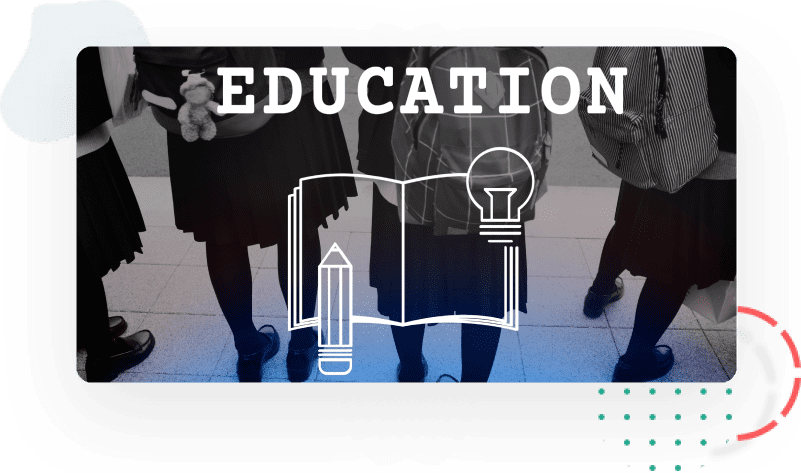Building scalable Edtech solutions is a multifaceted process that requires careful planning, the innovative design, and a commitment to core values. As the evolution of digitalization grows at a faster pace, so does the change in EdTech solutions, where the education system should be more accessible and more scalable.
When talking about accessibility many factors can be taken into consideration where the product could be accessible to larger learner groups based on the following factors.
In the rapidly changing EdTech industry, accessibility and scalability have become essential components for success. As educational technologies continue to grow in popularity, creating inclusive environments for all users is crucial.
With an expanding user base that includes diverse demographics such as students with disabilities, non-native language speakers, and learners from different socio-economic backgrounds, the demand for accessible solutions has never been greater.

The India EdTech Market is valued at USD 5.13 Billion and is projected to reach a market size of USD 17.34 Billion by the end of 2030. Over the forecast period of 2024-2030, the market is projected to grow at a CAGR of 19%.
Incorporating effective strategies to enhance accessibility in EdTech is essential for creating inclusive educational thoughts and experiences.
Here are some key approaches to improve accessibility for all users:
- Universal Design: Apply principles that ensure usability for everyone, offering diverse means of representation and engagement.
- Assistive Technologies: Integrate tools such as screen readers and speech recognition to support learners with disabilities.
- Clear Navigation: Design platforms with intuitive layouts to help users find information easily.
- Text Alternatives: Provide captions and transcripts for audio and video content, ensuring access for users with hearing impairments.
- Flexible Learning Options: Offer various content formats and adaptive learning paths to accommodate different learning styles.
- Feedback Mechanisms: Establish systems for users to report accessibility issues and suggest improvements.
- Training: Equip educators and developers with knowledge of accessibility best practices to promote inclusive EdTech.
- Educational Videos: Videos with subtitles and more captions and subtitles which strategically proven to be more accessible.
Strategies for Enhancing Scalability
As the EdTech industry continues to grow, developing scalable solutions becomes essential to accommodate the fluctuating demands of users. Several strategies can be employed to enhance scalability, ensuring that educational technology platforms can effectively manage increased user loads while maintaining performance and accessibility. This flexibility minimizes downtime and enhances user experience.

Microservices Architecture
Adopting a microservices architecture enables EdTech providers to break down applications into smaller, independent services that can be developed, deployed, and scaled individually. For example, if a learning platform needs to enhance its quiz functionality, it can deploy changes to that microservice without disrupting other services, such as user authentication or content delivery.
Load Balancing
Load balancing is critical in distributing user requests across multiple servers or instances, ensuring that no single server becomes overwhelmed. By ensuring that databases can handle increased loads seamlessly, EdTech providers can improve the overall responsiveness of their platforms.
Continuous Monitoring
Implementing continuous monitoring tools allows EdTech companies to proactively identify performance bottlenecks and address issues before they impact users. This approach enables quick scaling adjustments and ensures that systems remain robust as user demands evolve. Incorporating these strategies can significantly enhance the scalability of EdTech solutions, paving the way for a more responsive and inclusive educational experience.
Caching
Store frequently accessed data in memory to reduce the load on your database. Caching can significantly improve performance and scalability. Use a content delivery network (CDN) to cache static assets like images and videos closer to users.
Auto-scaling:
Automatically adjust the number of instances based on traffic demand. This ensures that you have enough resources to handle peak loads, while also reducing costs during off-peak times. Auto-scaling can be based on metrics like CPU usage, memory usage, or request latency.

In terms of scalability, a survey conducted by EdTech Digest found that 45% of EdTech companies struggle with scaling their platforms to meet growing demand. Moreover, 70% of respondents indicated that they plan to invest in scalable solutions over the next year, reflecting a commitment to adapting to the ever-increasing can foster a more inclusive and effective educational environment.
The Indian EdTech Landscape
India’s EdTech sector is growing rapidly, with a projected market of $10.4 billion by 2025. The market is driven by the increasing internet penetration and mobile devices in urban and rural areas. Online learning platforms like BYJU’s and Unacademy cater to various educational segments, offering personalized learning experiences. However, scalability challenges persist, especially during peak enrollment seasons. To address these, companies are investing in robust cloud infrastructure and microservices architecture. Accessibility is another critical aspect, with initiatives like the Digital India campaign promoting internet access and digital education in underserved communities. As the industry evolves, inclusive practices will be crucial for every learner to benefit from technological advancements.
Conclusion
The importance of accessibility and scalability in the EdTech sector for creating inclusive educational environments. Strategies for enhancing accessibility include designing for all abilities, implementing responsive design, and providing multilingual support. Regular accessibility testing and assistive technologies can further enhance inclusivity. Scalability strategies include leveraging cloud infrastructure, adopting microservices architecture, and load balancing. Integrating these principles into EdTech strategies ensures equity in education maintains performance and enhances learning outcomes but also prepare for long-term growth in an increasingly competitive market. As the EdTech landscape continues to evolve, focusing on these dual imperatives will be vital in supporting a diverse and dynamic learner population effectively.




